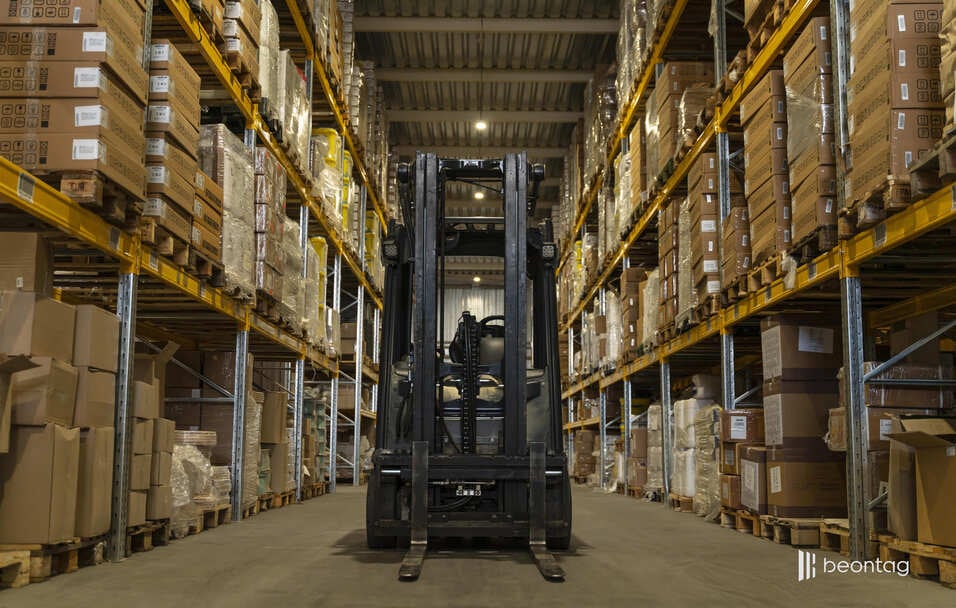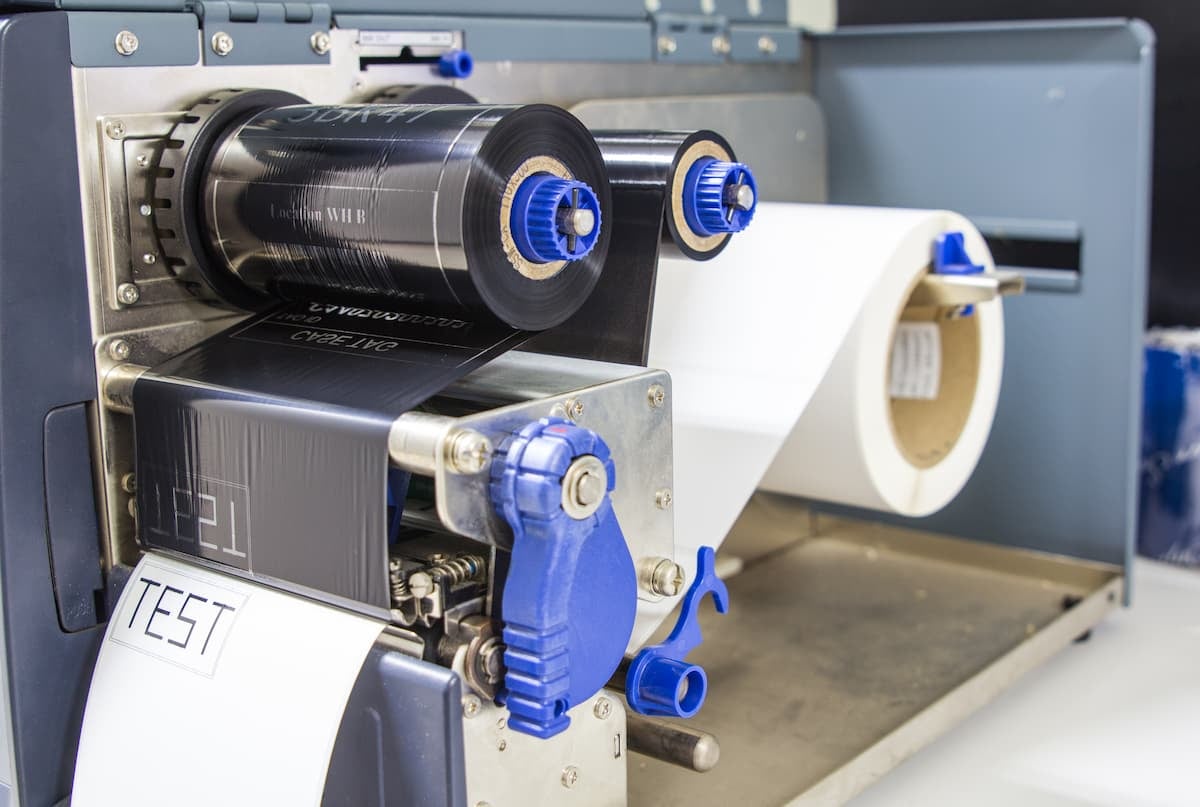
Blog
Make your processes 25x faster with smarter inventory management!
Stay up to date, subscribe to our newsletter!
SubscribeBlog
Thermal paper is a special fine paper coated to react to heat, used in printers like POS and labels. The best type depends on your needs—direct thermal for short-term use or thermal transfer for durability. Learn how to choose the right one for your application!
Thermal paper is everywhere in our daily lives—receipts, shipping labels, tickets, and more. Behind its simple appearance lies a smart technology that powers fast and reliable printing without ink. But not all of them are created equal, and choosing the right one makes a big difference.
Businesses that rely on printed materials often face issues like fading, smudging, or paper jams. These problems usually trace back to poor quality paper or the wrong type of thermal material. Knowing what sets thermal paper apart is essential to avoid costly errors and ensure long-term performance.
In this complete guide, you'll discover what it is, how it works, the best options available, and how to choose the right product for your specific needs. Read on to make confident and informed decisions about this vital printing supply.

It’s a specially coated paper designed to react to heat. Instead of using ink, thermal printers apply heat to the surface, activating the chemical coating to produce an image. This makes thermal paper ideal for fast, low-maintenance, and cost-effective printing.
The coating typically includes a leuco dye and a developer. When heat is applied by the printer, these chemicals react to form the desired text or image. This makes it ideal for point-of-sale systems, barcode labels, and more.
Its clean, quiet operation and reliability have made thermal paper a popular choice across retail, logistics, healthcare, and financial sectors.
Thermal paper uses heat-sensitive chemistry to create images. A thermal printer uses a heated print head to apply heat directly to the paper. The coated surface changes color in response, forming a high-resolution image or text.
No ink or toner is needed. This reaction occurs quickly and with minimal mechanical movement, reducing wear and tear on the printer.
The technology is efficient and environmentally friendly compared to ink-based systems, though certain health and environmental concerns do exist, which we'll address later.

Its usage goes far beyond printing simple receipts. Its efficiency, low maintenance, and versatility make it essential for many industries. From reducing operating costs to increasing printing speed and reliability, thermal paper offers numerous advantages for businesses seeking streamlined operations and improved output quality.
Thermal paper comes in various formats; each designed for a specific use. Standard, preprinted, and self-adhesive thermal papers address different business needs—from everyday receipts to branded labels and logistics tags. Knowing these distinctions helps you choose the right paper for print clarity, durability, and application type.
This is the most used thermal paper. It's perfect for general applications like receipts and point-of-sale systems. It offers decent image retention under typical conditions but may fade over time with heat or UV exposure.
This paper includes branding, logos, or terms and conditions printed in advance. Only the variable information is printed at the point of sale. It enhances customer experience and brand recognition.
Self-adhesive options combine thermal technology with label adhesives. They are ideal for shipping, packaging, and product labeling. These papers must endure various environmental conditions without losing legibility or adhesion.
Choosing between standard and specialty thermal papers depends on your application. Here's a quick comparison:
| Feature | Standard Thermal Paper | Specialty Thermal Paper |
|---|---|---|
| Use Case | Receipts, POS | Shipping, harsh environments |
| Durability | Moderate | High (resistant to heat, water, light) |
| Cost | Lower | Higher |
| Image Longevity | Short-term | Long-lasting |
Specialty papers include top-coated and synthetic options designed for durability in logistics, healthcare, and manufacturing.
Normal paper requires ink or toner to display images or text. Thermal paper, on the other hand, reacts to heat due to its chemical coating. This fundamental difference makes it more efficient in many business contexts.
Normal paper also involves more components and maintenance. It simplifies the printing process, reduces costs, and minimizes technical issues.

Thermal paper is widely used in:
Each application benefits from thermal paper's speed, reliability, and low maintenance.
Health and Beauty Applications
Small Office & Home Office Applications

Businesses can reduce exposure to substances by selecting BPA-free and phenol-free thermal paper and adopting more sustainable printing practices. Beontag leads this transformation by offering a full line of sustainable products under its “Green Solutions” line.
These solutions include:
With these alternatives, companies across sectors like retail, logistics, and healthcare can meet compliance requirements, reduce their environmental impact, and align with modern consumer expectations.
When selecting thermal paper, consider:
Before selecting thermal paper, it’s essential to check compatibility with your printer. Direct thermal printers require specially coated paper, while thermal transfer printers need ribbons. Using the wrong type may result in poor print quality, equipment damage, or inefficiency. Always consult your printer specifications to ensure proper pairing and optimal performance.
Thermal paper performance varies depending on exposure to humidity, heat, and sunlight. In high-moisture or outdoor environments, synthetic or top-coated options are more durable and resist fading or smudging. Always check if the paper you’re using is suitable for your setting required environmental need.
Health and safety regulations increasingly require BPA-free thermal paper, especially for applications involving food, retail, or prolonged human contact. Choosing certified BPA-free options ensures compliance and minimizes exposure risks. Businesses should verify certifications and regional regulations to meet sustainability goals and protect employees and consumers alike.
Beontag offers a wide range of high-quality thermal papers designed for different sectors. Their Roll Label Variable Information Direct Thermal Papers are used in retail, logistics, and healthcare for efficient and durable labeling.
For example, Beontag's case studies show successful implementations in food packaging, logistics, and pharmaceutical labeling—highlighting real-world applications of the best thermal paper solutions. These products deliver lasting performance even under challenging conditions.
No. Regular paper lacks the heat-sensitive coating required for thermal printing. Using it in a thermal printer can cause malfunctions, waste time, and produce no legible output.
Thermal printers are designed specifically to work with thermal paper. Using the wrong paper can damage the printer and void warranties. Always check your printer specifications and use the correct paper type to ensure optimal results.
Choosing the best thermal paper ensures smooth operations, cost efficiency, and long-term reliability. Whether you're running a busy store or managing a warehouse, the right paper makes a huge difference.
Explore Beontag’s full range of thermal solutions to find the perfect fit for your business. Ready to upgrade? Contact us now and discover what high-quality thermal paper can do for you.